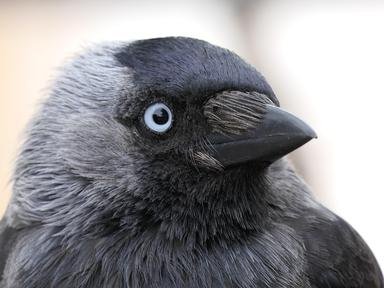Quiz Answer Key and Fun Facts
1. Which of these is the scientific name of the blue tit?
2. Which of these is a characteristic of a coal tit?
3. Wrens can be found outside the Americas.
4. What type of bird is a dunnock most closely related to?
5. What colour is a British blackbird's bill?
6. How is the great tit identified in a mixed group of tits also containing blue, coal, and marsh tits?
7. Which of these scientific names is that of the magpie?
8. Passer domesticus is the scientific name of which bird?
9. UK robins are famous for their red breasts, but what colour separates this from its brown back?
10. From which area of Eurasia did the collared dove originate?
Source: Author
aob6666
This quiz was reviewed by FunTrivia editor
crisw before going online.
Any errors found in FunTrivia content are routinely corrected through our feedback system.


